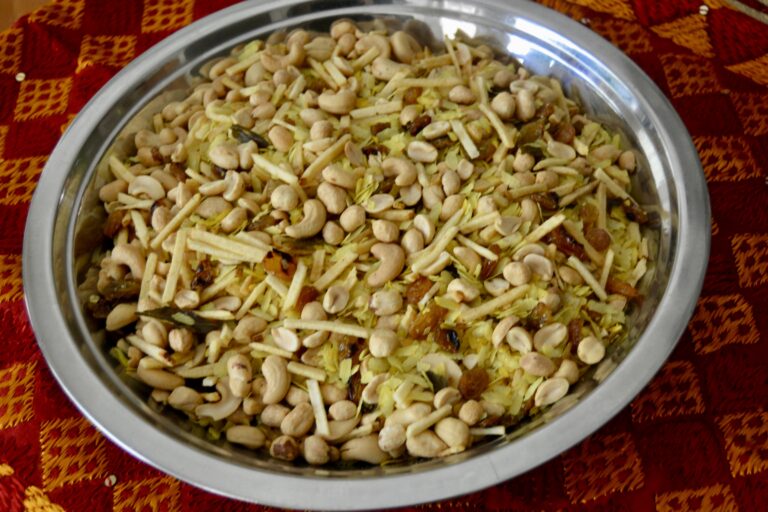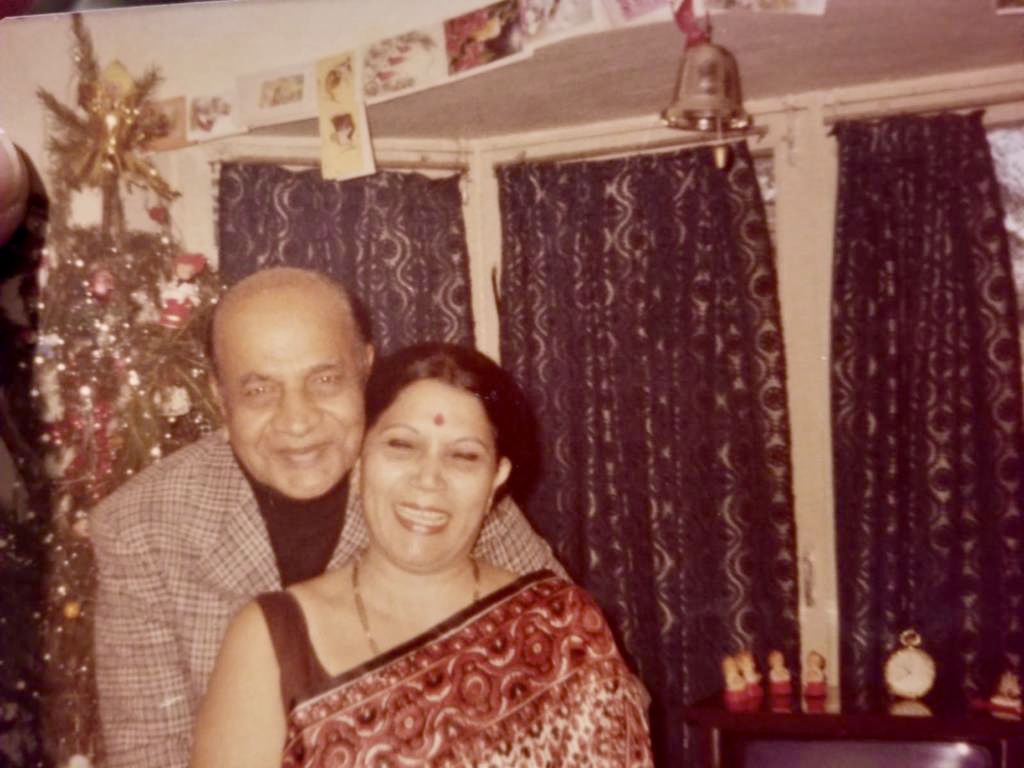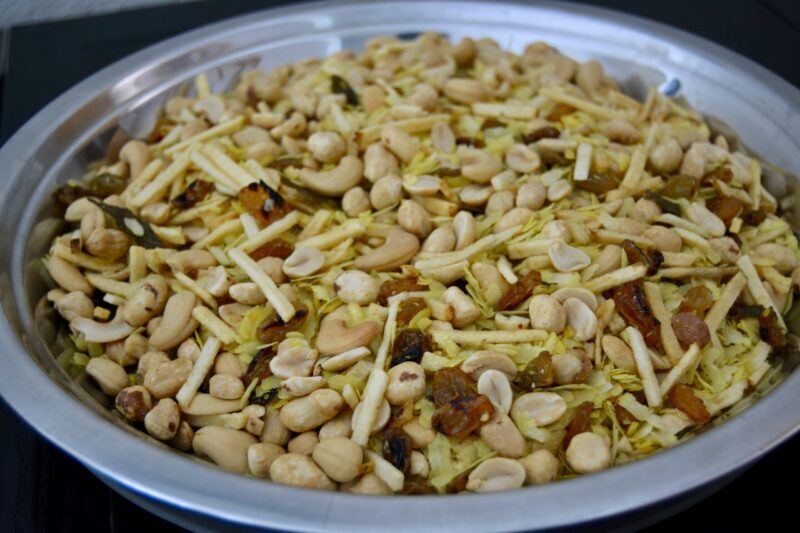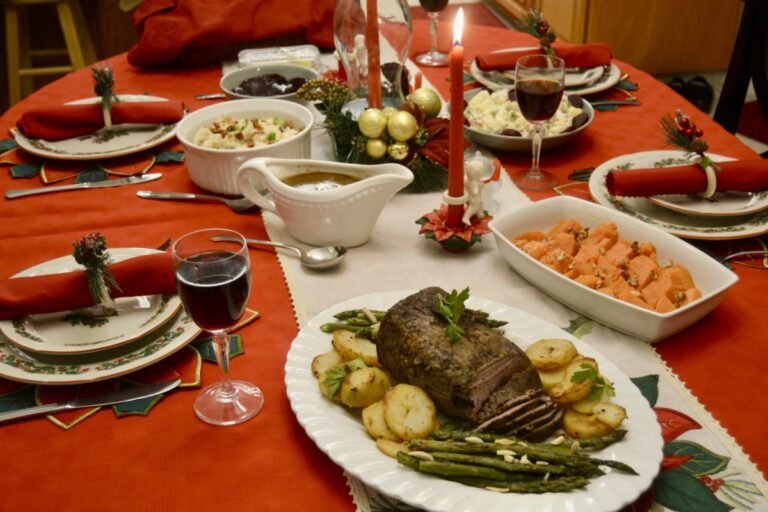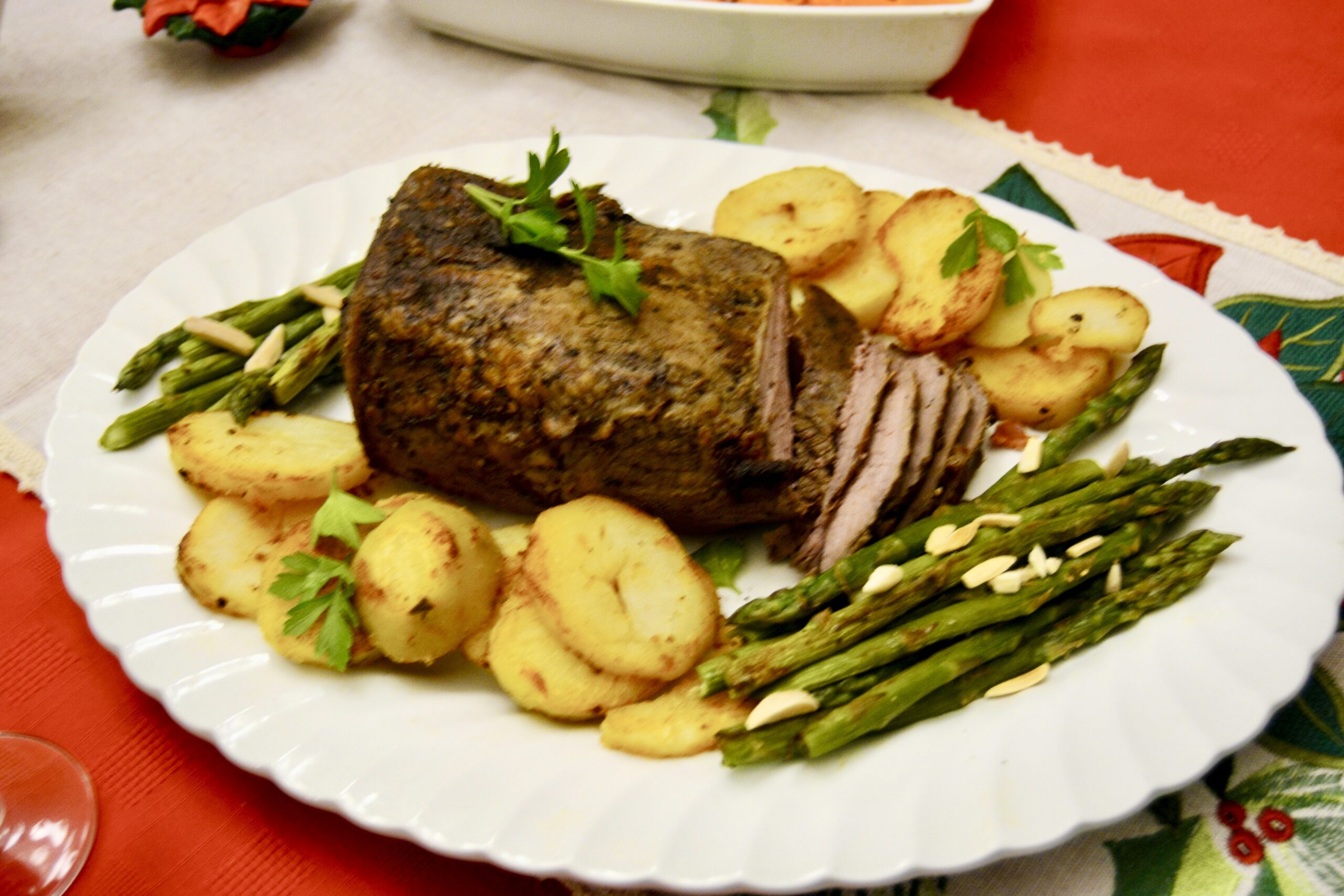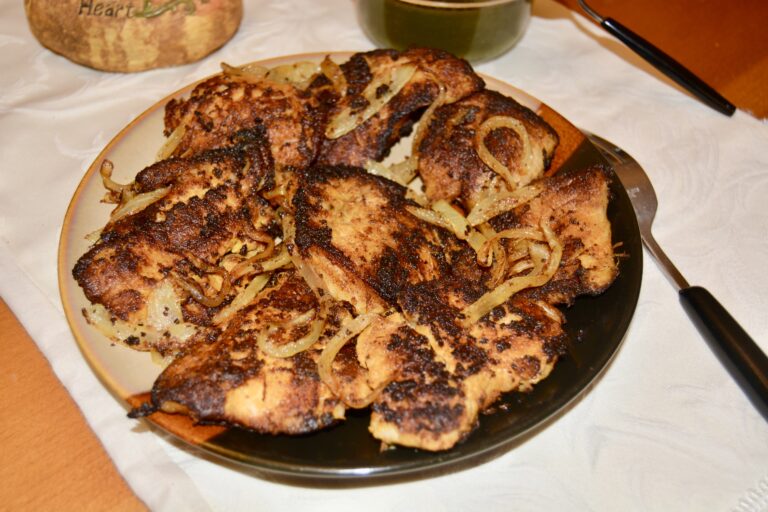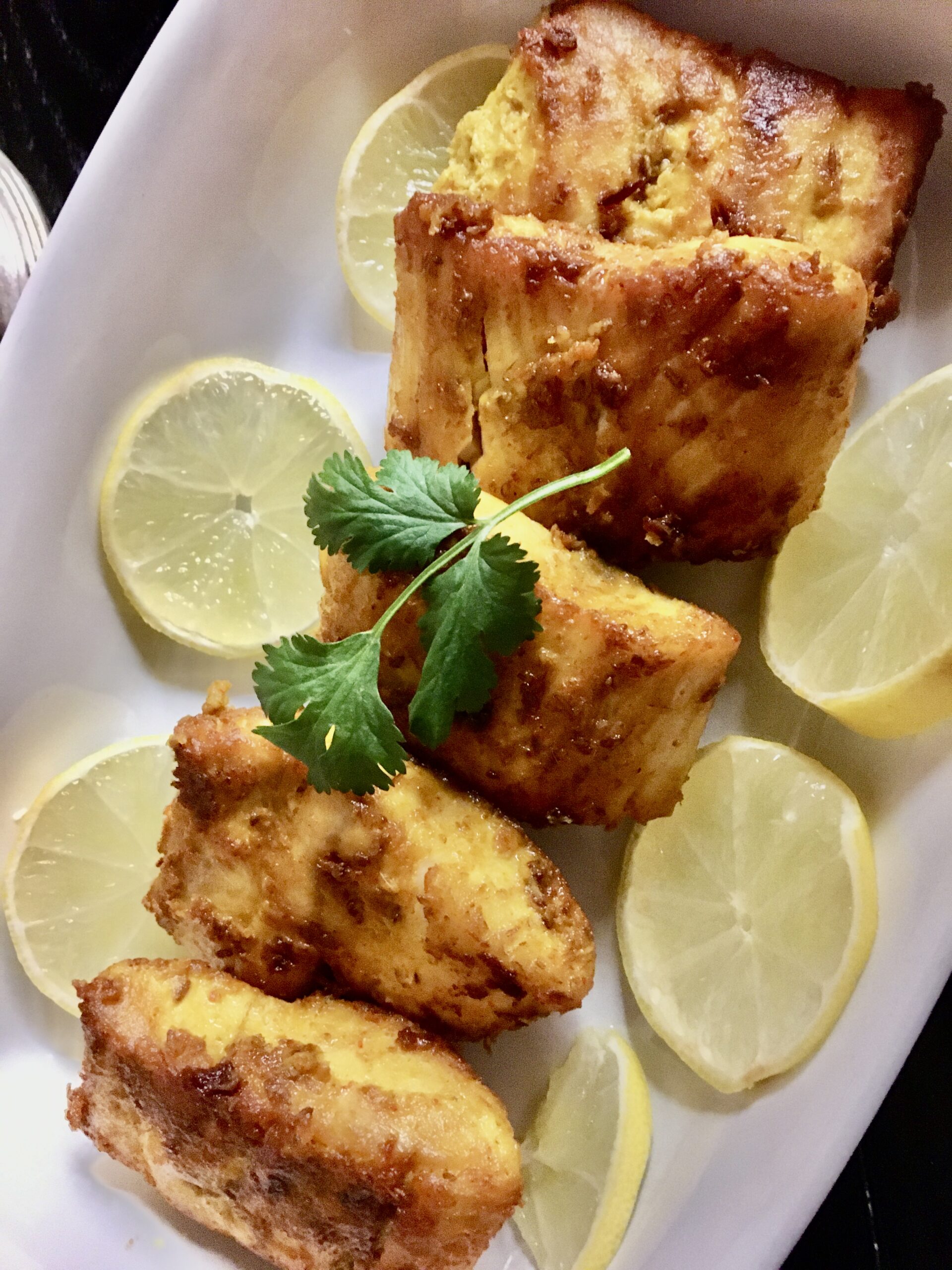Our second-youngest sibling is a picky eater. Not only that, she takes forever to finish her food! I recall a day when we sat chatting around the dining table. Aunt Dolly was visiting. She watched while my sister ate a banana. Finally, she said, “For goodness sake, finish that thing, you have taken 45 minutes already!” We all laughed at her exasperation! Today, I am fixing her lobia curry, one of the few lentils she enjoys.
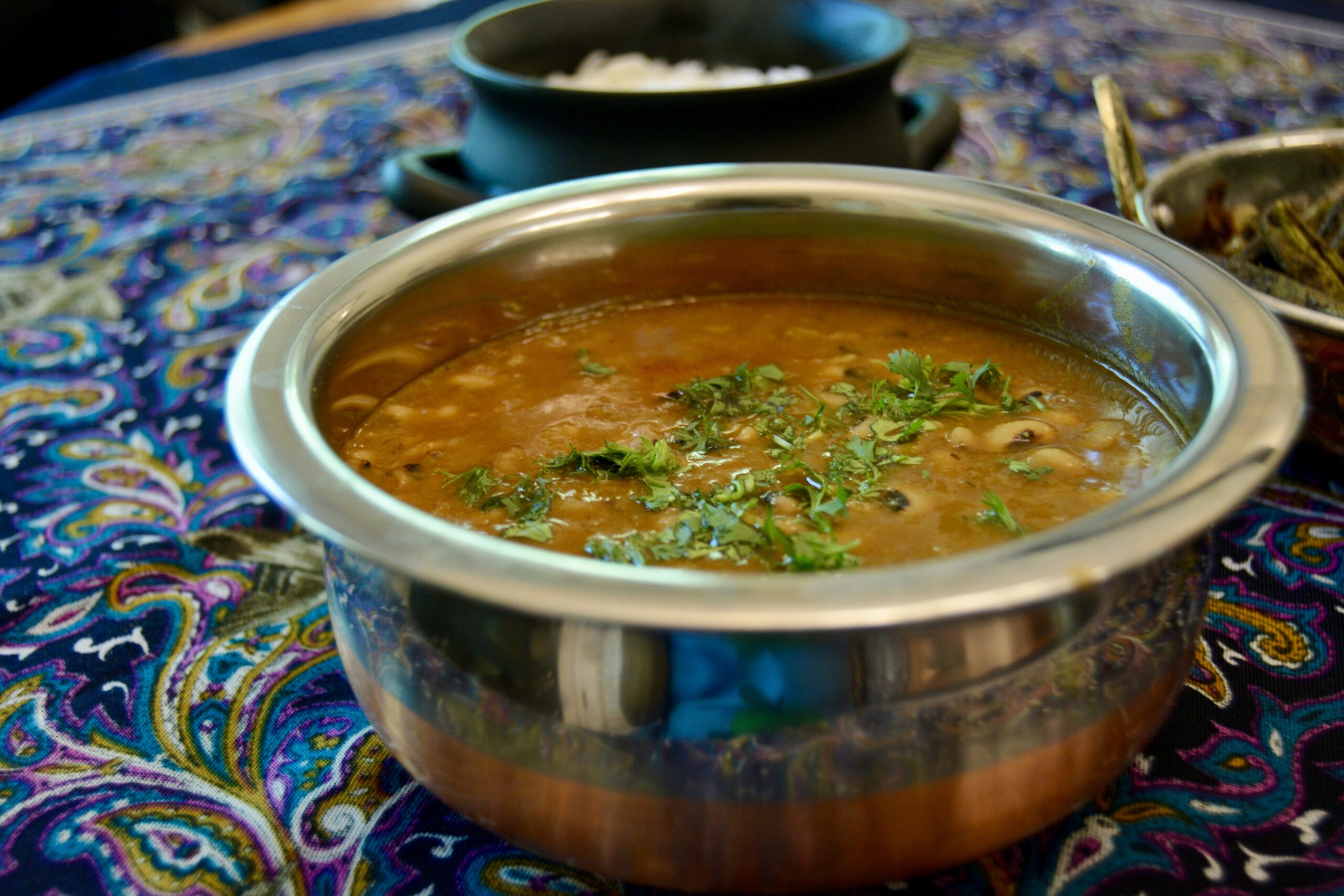
Lobia Lentil Curry (Black-Eyed Peas)
Ingredients
- 2 cups dried black-eyed peas
- 2½ tbsp cooking oil
- 2 medium onions (peeled and chopped very fine)
- 1 medium green Serrano chili (optional)
- 2 tbsp tomato paste ( or 1 8 oz can tomato sauce)
- 1 tbsp fresh ginger paste (or bottled)
- 1 tbsp fresh garlic paste (or bottled)
- 1 tsp cumin powder
- ½ tsp tumeric powder
- ¼ tsp red chili powder (more or less, according to your taste)
- 4-6 cups water (or more, depending on the amount of gravy you want)
- 2 tbsp chopped cilantro (fresh coriander leaves, for garnish)
Whole Spices
- 1 large black cardamom ( )
- 2 bay leaves
- 2-3 cloves
- 4 peppercorns
Instructions
To Prepare
- Pick and clean the black-eyed peas of any grit. Rinse well 4 times. Cover with 5 cups of water and soak overnight. When ready to cook, rinse through a sieve.
To Cook
- Heat oil in 4-6 quart cooking pot over medium heat. Add the whole spices, wait 30 seconds, stirring once or twice, and then add the onions. Sauté till ¾ brown, about 5-8 minutes.
- Add the rest of the masala, garlic, and ginger. You can mix these all together with a little water before adding them to the pot. Stir for 2 minutes, scraping the bottom of the pan to ensure the ginger, garlic, and masalas don't stick and burn.
- Add the tomatoes and cook for another 2 minutes. Then add the black-eyed peas and water. Cover and cook until tender. Approximately 35-40 mins. If the water starts to dry up during the cooking process, add a little more hot water.
- When nearly done, use the back of your ladle to mash some peas against the side of the pot to make a thicker gravy. Cook for another 3-5minutes.
- Transfer to a serving bowl and garnish with the chopped cilantro. It tastes good with plain boiled rice or any Indian-style pilaf.
Simple Tadka / Tempering
- A simpler tempering can be done with just: 1 medium onion chopped, 1 large tomato chopped ½ tsp turmeric 1 tsp cumin powder Chili powder to your taste. Sauté the onions and tomatoes, and then stir in the powders and pour the mixture into the boiled beans.

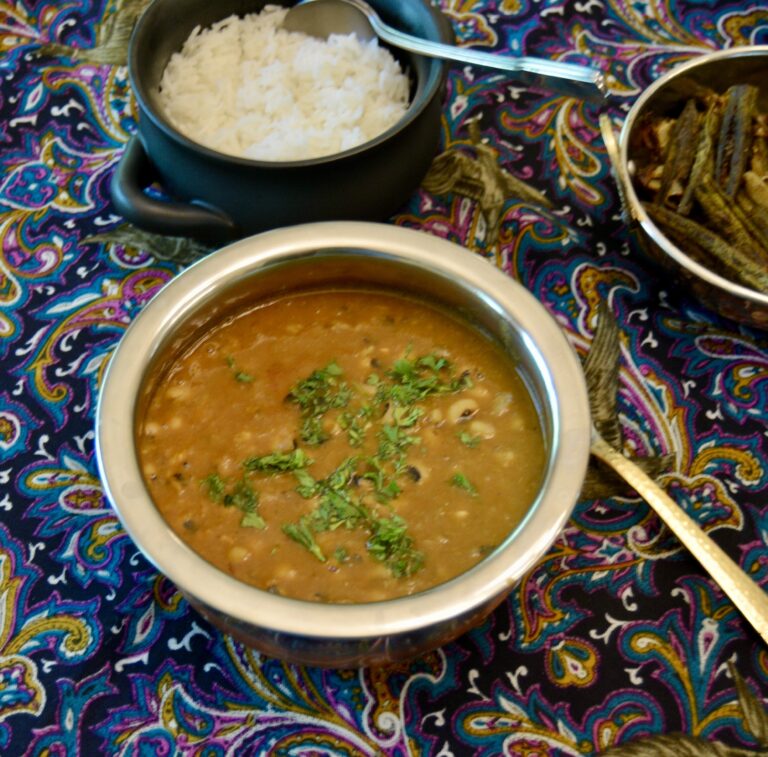

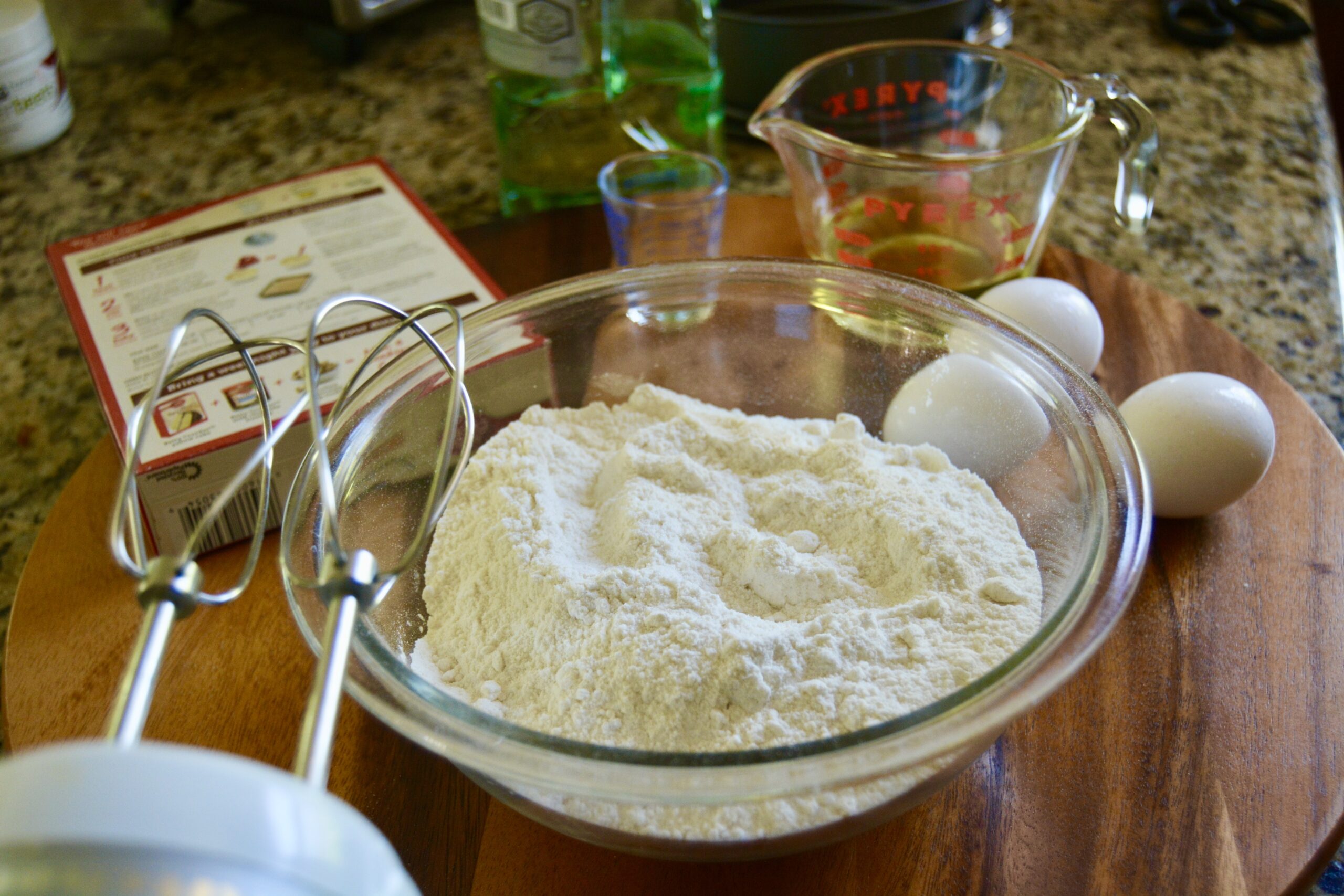


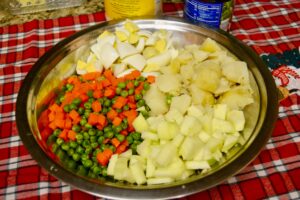 The eggs and potatoes should be boiled separately.
The eggs and potatoes should be boiled separately.